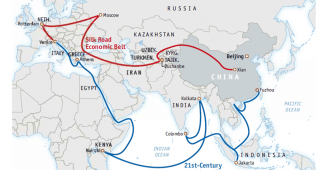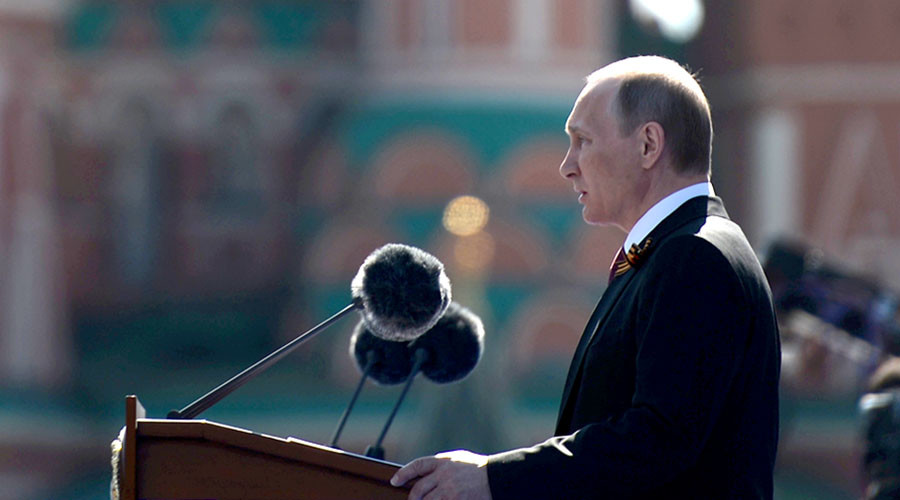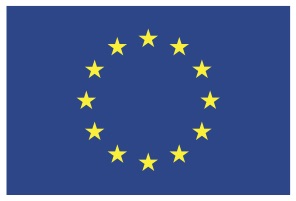An American political theorist Kenneth Waltz is seen as the creator of the neorealism. Waltz sophisticates the realist scheme, including in it the “structure” conception of the International Relations.
Instead of the chaos and anarchy (classical realism) the International Relations becomes the field of the permanently changing balance of powers, its joint, but rectified potential keeps the whole world system in one position or, in several cases, provokes its changes. Thus, the sovereignty and its extent, as well as the ability to implement the national interest, depend not only on State and its rivals and competitors in every particular case, but on the whole structure of the global balance of powers. And the structure, in his opinion, actively influence the content and the extent of the national sovereignty, as well as formulation of the national interests.
The classical realist begin its analysis from the individual State. The neorealist, after Waltz, start it from the global structure, consisting of the individual States and influencing their profile. At the same time, as the classical realists, the neorealist says that the main principle of the State politics in the International Relations is the principle of the “self-help”.
Waltz discussed in details the theory that the bipolar world is the most stable arrangement of the International Relations, based on the two hegemonies (American and Soviet) equilibrium. The structure itself, not the interest of the national States, determinates the extent of the whole world States’ foreign politics. The estimation of the national interests (and, consequently, its implementation) begins from the analysis of the bipolarity, localization of each State on the world map of the bipolar space with following geopolitical, economical, ideological and political character.
According to Waltz, the bipolarity is the more profitable form of the balance of power, as it limits the possibilities for qualitative revision of the status quo by the actor-States: the whole world space is divided between two centers and its satellites, and even local changes become unlikely, as the automatically its involves into the conflict two Superstates that are able to destroy each other, as well as the whole humanity under the direct nuclear collision.
The dissolution of the USSR and, consequently, of the bipolar world in 1991 was too unexpected for the realists as Waltz himself and his followers didn’t prevent it, being sure in bipolar structure stability. However, any empiric change of the system can bring to sudden results in any particular cases and some new changes of the whole International Relations system again and may make the Waltz structuralize theories relevant, as it usually happens with scientific theories.
Robert Gilpin: Theory of Hegemonic Stability and Bipolar World Order
The other important representative of the realism is the International Relations specialist Robert Gilpin concentrated on the studies of the hegemonic structure. In his opinion, any world order has in its center certain hegemonic power, the hegemon. It may be the only one that creates the monopolarity in the World. Or the world can consist of the two hegemons, creating the bipolarity (that Waltz studied). But there can be more hegemons. With such an approach the neorealist of the movement were prepared for 1991 and the end of the Cold Was, as they thought the possibility of monopolar hegemony that became more evident in the end of the XX centuries, represented by the global US domination.
According to Gilpin, any hegemony builds its own system of international order, takes the responsibility for conflicts in zone of its influence and bringing up the periphery to the center standards. Thus, Giplpin says, the hegemony exhausts itself, spending its energy from the center to the periphery and undercutting its power. Those who are under the hegemony control, soon or later, will adopt the economic, military and technological skills and, becoming stronger, destroy the existing world order in their favor. Then, there are the period of the war against each other, social, economic, cultural degradation, until new hegemony will appear.
After 1991 the theories of Gilpin became widely accepted ad they proves in the scientific way the monopolar world and American hegemony. Instead of two hegemony, now it is turn of the only one American hegemony that defines the structure of the international relations in a global scale. The ideas were also developed by the other authors of the movement such as S. Walt ad M Rupert.
However, in the case, the realist are certain that there are international interests in the system center. Under the monopolar world circumstances, the national interest of the one State (the USA) that is situated in the center of the global hegemony and is its source. The other countries are included in the asymmetric picture correlating their national interests in the regional scale with its global structure.
At the same time, Gilpin aims to show that the hegemony is not the profitable state of the country and have to spend its energy to control the zones of its influence that cause its entropy. The USSR fate is a good example in the case. And, according to Gilpin, the USA is to face the same end. He says that the monopolar world is unfair not only for those who become the hegemony object, but for those who are its subject. Such a logic reminds a lot the colonial-racist attitude of R. Kipling on difficult “White Man’s Burden”.
Gilpin offers to introduce the concept of the “hegemonic war” that he describe as the consequence of uneven distribution of the resources between the different political institutions. The one want to strengthen its advantages, so it is carrying war. The other aimed to redistribute the resources in its favor, and it is a motive to start a war. If Waltz, following the ideas of classical realism, believes that the war is cause vu the anarchy in the International Relations, i. e. there is no institution that could stop its, for Gilpin it is not the motivation, but the following circumstance, and the real motive of the war is the will to dominate, i. e. to create the world order of the hegemony and being in head of it.
John Mearsheimer: Offensive Neorealism
One more key representative of the American neorealism, giving the significant importance to the hegemony, is John Mearsheimer who is together with his followers used to be called the offensive realists. It shows the differences of the International Relations structure comprehension. Waltz believes that the at one time or another Great States in their competition will decide to limit their pretension for safety reasons, concentrating on the defense. Mearsheimer insists that the hegemony is always focused on strengthening its power and weakening his rivals, otherwise, it can lose the moment of its domination.
Mearsheimer, however, believes that the global hegemony. i. e. monopolar world, is impossible in its full term, as it would mean overextension of the infrastructure that no government could allow, even the most powerful. That’s why any hegemony has to be only regional, strictly observing that the competitive hegemony that could limit its interests would not appear in the zone of its influence. The hegemony could interference into the far regions only when the local States can’t prevent, on their one, the appearance of the unite hegemon between them, being able to submit them to its ideology and to challenge the far powers.
Mearsheimer thinks that the USA is the regional hegemony that is threaten by China that is becoming the regional hegemony too and will be able to compete with the US in the Pacific region at least. He predicts the future collision between China and America.
Mearsheimer is quite critical to the Israeli policy and even more critical to the pro-Israeli US lobby that he dedicated one of his book written together with other famous neorealist Stephen Walt. According to Mearsheimer, the Israeli lobby preforms not only against the US national interests, but is harmful for the Israeli national interests urging it to the thoughtless and racist actions toward the Palestinians and neighboring Arabic nations (he severely criticized the military actions of the Israel in 2006 in Lebanon).
Mearsheimer is the supporter of the nuclear weapon proliferation as, in his opinion, it can fully provide the regional security of the Great Powers and harmonize the world politics.
Defensive Realism
Sometimes the defensive realism is distinguish from the neorealism. The defensive realists promote that the anarchy in the world makes the State to become “obsessed” about their security. It causes the “security dilemma” when one State tries to increase its security level (so the security is regarded as the zero-sum game) that leads to the instability as its opponents react right here on the decline of their own security level, aiming to reestablish the balance. It cause directly the arms race.
The main theorist of the defensive realism are Stephen Walt, Kenneth Waltz, Stephen Van Evera, Shiping Tang, Charles Glaser.
C. Glaser believes that the State, in some cases, can inform each other about their peaceful intentions. If one State can prove to another that its intention are good, the “security dilemma” can be surmounted.
At the same time, the defensive realist, on the contrary to the offensive one, supposes that the domestic politics of the State can influence somehow the foreign politics that make them close to the liberals in the International Politics.
B. Chellaney’s Hyperrealism
The other type of neorealism is so-called hyperrealism. The most outstanding representative of the movement is Brahma Chellaney.
The hyperrealists sees in the inter-States relations the infinitely repeated cycle of the repetitions. They believes that the conflicts and completion between the States can’t turn into the peace and friendship (excluding the cases when they unite to fight the common enemy) that’s why the best tools to achieve the political goals is the threats and use of violence. As the majority of other realists, the hyperrealists are certain that the best and efficient way to gain peace and stability is accumulation of the military power and being ready to use it. In addition, the hyperrealists decline, in fact, all their opponents’ objections on the active growth of the spending on weapons, as well as they doubt a lot on the efficient role of the institution, laws and agreement in the world politics. The hyperrealist take into account only power and might; the other things are “humanitarian illusion”. The war always take place when the competitive States realize that the other side become too powerful or too weak.
Steven Krasner: “Strong” VS “Weak”
The active representatives of the modern neorealism is the American Steven Krasner.
Krasner distinguishes in his theories such a concept as “weak State” that, in his view, is the factor of the instability and threat to the “powerful States”. The “weak State” is unable provide the laws application on its territory, and it creates favorable conditions to the centers of international terrorism to appear. Krasner supposes that to prevent it the “weak States” should be under the “strong States” control which have the global and regional hegemony. The fact that the State is weak, is enough to interfere into its domestic affairs. This idea is developed in his theory of the “graduated sovereignty”, believing that not all the nominally sovereign States should be regarded as fully sovereign. The true sovereign exist only in the developed democratic Western States. In the term, Krasner studied the Third World regimes, showing that the liberals in the International Relations has wrong tendency, in his opinion, to observe them form the economic help and technical support of their development, as, according to Krasner, they like other States aim at power and security. Receiving support from the West they try to turn it into the power potential. In some cases, it may cause new conflicts and treat to the Western World itself.
The other issue, developed by Krasner in some kind of nonrealistic approach in the International Relations is the taking decision idea in the foreign politics. According to him, all important decisions in the sphere must be taken mostly by the high officials (first of all by the President), and not by the anonymous bureaucracy having no legitimate mandate of the society for its activity in the International Relations.











